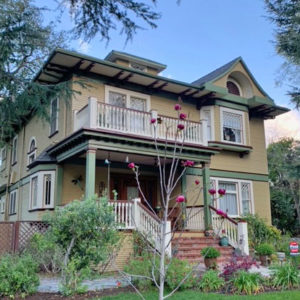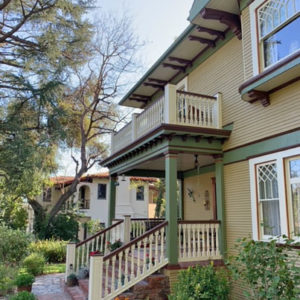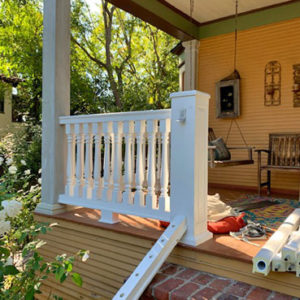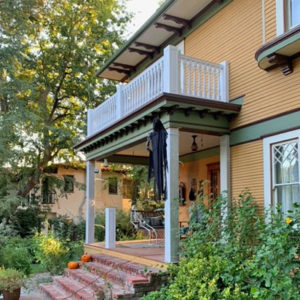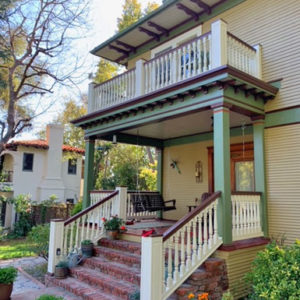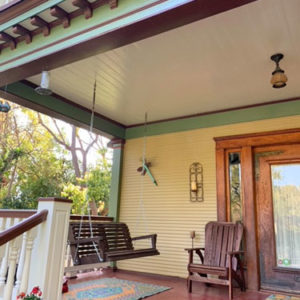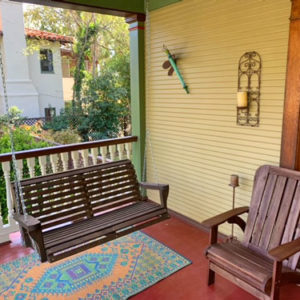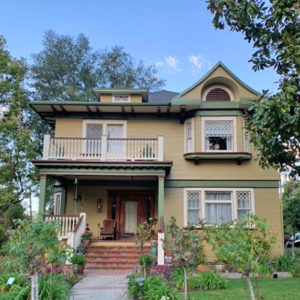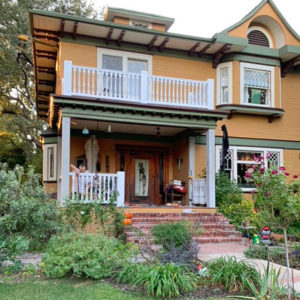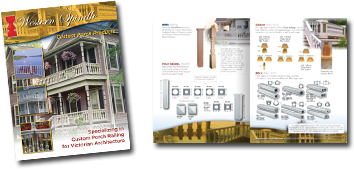DIY Porch Remodel
While many of our porch project orders are installed by professional builders and contractors, we also have many homeowners and do-it-yourselfers installing porch railing on their own homes. Our porch rail systems are designed to be fairly straightforward to install. Basic carpentry skills and our installation instructions will be sufficient for a successful DIY porch remodel. And of course if you run into trouble, just email or call and we’ll be happy to help. Here’s one homeowners experience installing our 3 5/8″ Polyurethane Composite Porch Railing:
T.B. of Altadena, CA writes:
“Hi Adam,
It took awhile to get everything just right, but worth the effort. FYI, I have done small projects at our home, but not something of this scale. The work not only involved replacement of the porch rails, but also some structural repair. You are welcome to share the photos.
A few observations about the product and its assembly.
As a novice to this I wasn’t expecting drilling all of the holes for the spindles. In my head I had in mind that the rails would come pre-drilled but I soon realized that would not be possible due to variations in the rail length. Setting up jigs for drilling was a bit daunting, especially for the stairs. Since I had purchased the exact amount of material required, I didn’t leave much room for mistakes. I think I got lucky. Drilling the material was challenging. The straight rails went quickly, but the stairs (saved for last) were a real challenge.
Another challenge was connecting the rail brackets to the post. The mortising for the brackets did not allow for the screw heads. I had to go back and mortise a second time for that.
At the end of the day you will see money and time well spent. We are quite happy with the end result. Thanks.”
This California home used the following products to achieve a crisp, beautiful, and detailed look:
8” x 9’ Square Non-Tapered FRP Column – while we only have our round tapered designs available online, we are always happy to provide you with a custom quote for non-tapered, square, and many other column options.
Although our polyurethane products provide the look and feel of wood without the concern of rot, some of our customers are hesitant to pursue this option due to unfamiliarity with the material and installation process. While you are able to use normal woodworking techniques when working with polyurethane, there are a few common questions that we would like to answer pertaining to the system.
Does Poly Rail Come Pre-Drilled?
Each poly spindle and baluster have a PVC tenon that extends from the top and bottom. We do not pre-drill our poly rail to accept these tenons due to varying rail lengths and to ensure we provide you with more flexibility for your project. Our poly rail comes in 8’, 10’, and 12’ increments for trimming in the field. Exact rail lengths will vary for each customer and these lengths will affect spindle spacing. We also want you to be happy with the look of the spindles and give you the ability to change your mind or make adjustments in the field. For example, we have specific on center spacing that we recommend in order to provide you with 3 ⅞” between each spindle and baluster at the widest portion which abides by the 4” ball rule code required in many areas. Some of our customers do not have specific codes within their area or choose to pursue their own spacing. By not pre-drilling our poly rail, the installation process is more forgiving to mistakes, provides more flexibility, and offers no hindrance on the vision you have for your project.
How Are Poly Spindles Installed on Stair Rail?
When installing poly spindles on the stair rail, we recommend purchasing an additional PVC pipe with slightly smaller dimensions than that of the current tenon. The new pipe can be cut and placed inside the PVC pipe of the existing spindles once they have been cut at the appropriate angle of your staircase. We recommend using PL Premium Adhesive when creating the new tenons which can then be installed into the rail. If you do not want to purchase additional material, another option is to make an angled cut around the existing PVC tenon; however, we have found this to be more time consuming as compared to cutting through the entire spindle and creating a new tenon.
Do I Have to Paint Polyurethane?
Yes. Our poly products come pre-primed but do need to be painted within 30 days of installation. We use a water-based primer so it is important to make sure that you use a water-based paint. While there are many factors that can adjust the life expectancy of paint, on average, we see that additional paint may need to be applied in seven to ten years.
Whether you are a novice or have spent decades as a general contractor, we want your experience with our products to be far from daunting. Your feedback allows us to continuously expand our resources and provide insight on common questions we receive pertaining to the installation process. You can access a copy of our poly balustrade installation instructions here. We are also always a phone call away. Please do not hesitate to reach out with any questions you may have, feedback you would like to provide, and of course photos of your beautiful finished project.

